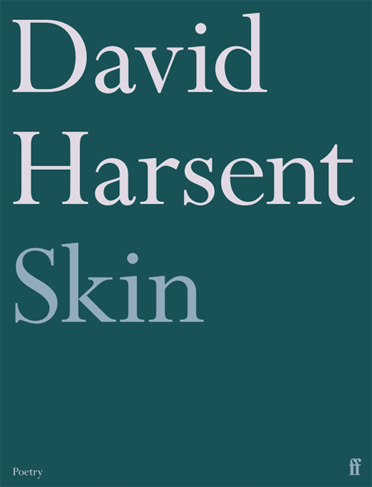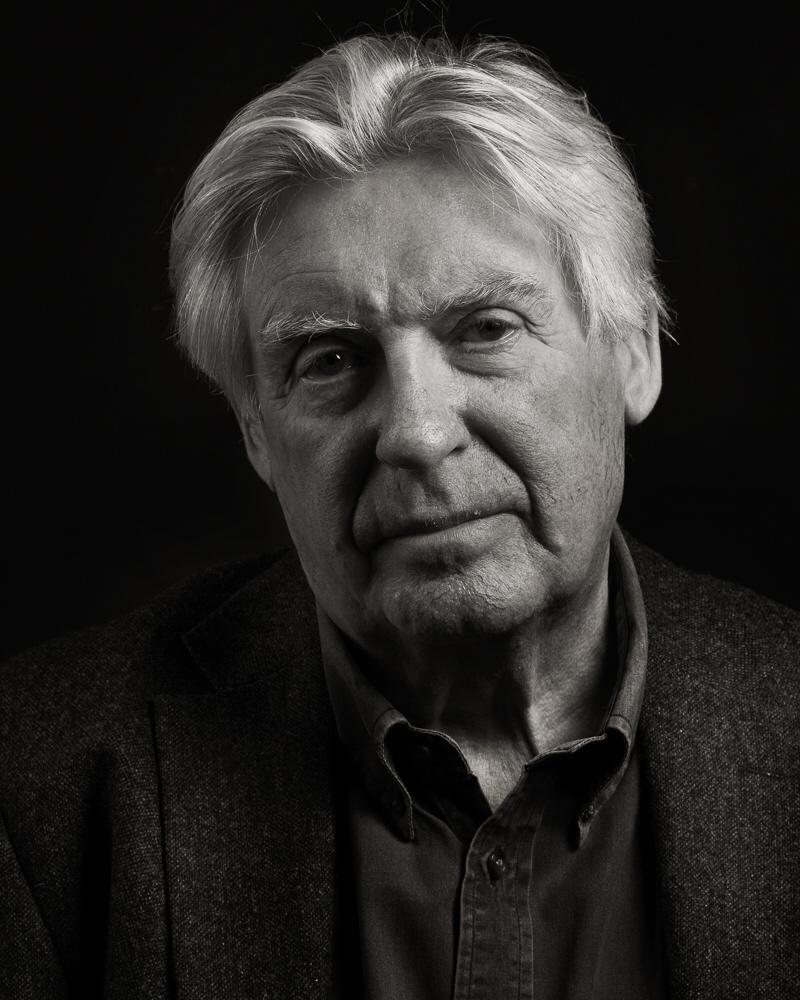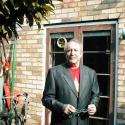David Harsent has won a lot of prizes. From the Eric Gregory to the T. S. Eliot, he has carved out a literary career positively glittering with awards and nominations, and keeps the kind of trophy cabinet that would turn many of his contemporaries green. But if points mean prizes, prizes also mean points, and point-scoring is a dubious means to judge a poet. While such institutions do much for the general reach and popularity of poetry, and though it’s always nice to be appreciated, you’d do better on the page than the awards stage if you want to get a proper sense of a poet’s interest in the language (the only real criterion, after all). Happily, David Harsent is very interested in the language, and his material remuneration seems deserved.
 The poetry is meditative but also technical, inquisitive over illustrative, and allows itself to become knotty and self-entangled where necessary. His new collection, Skin, asks difficult questions and doesn’t shy from difficult answers; it is wayward, thoughtful, and thoroughly sensitive to the complexities of even the most minor verbal disturbance. This is not to say that Harsent is involved in the current British scene of radical poetics (if you want that go to Keston Sutherland or Verity Spott), and he comes safely under the recognisable insignia of a ‘Faber Poet’, but it is still nice to see a mainstream poet thinking, above all, and for so long, about words.
The poetry is meditative but also technical, inquisitive over illustrative, and allows itself to become knotty and self-entangled where necessary. His new collection, Skin, asks difficult questions and doesn’t shy from difficult answers; it is wayward, thoughtful, and thoroughly sensitive to the complexities of even the most minor verbal disturbance. This is not to say that Harsent is involved in the current British scene of radical poetics (if you want that go to Keston Sutherland or Verity Spott), and he comes safely under the recognisable insignia of a ‘Faber Poet’, but it is still nice to see a mainstream poet thinking, above all, and for so long, about words.
Collected are 10 sequences, variously concerned with stones, birds, ghosts, hallways, and notebooks. Though covering a diverse range of subjects, they are all somehow bound together by this title, Skin: by the shifting dialectic of surface and depth, the limitations – and possible liberations – of experience, and the interactions of the human and the non-human. Indeed, this latter subject kicks everything off, both in the opening sequence, "Stones", which takes the simplicity of that titular object and imagines the "limitless emptiness" of its interior, and its loss once cracked open; and in the second, "Salt Moon", which moves quietly from mineral to animal: "As you might be a bird fording thin air to find / the line where night meets day as day declines". We can see here how Harsent is interested in finding the line between things and then allowing it to dissolve: there is the minute but insuperable distance in the line-broken "to find | the line", which performs its own search, before we meet the unplaceable definition of night fading up into day, and "line" shading down into "declines" – we occupy a space of gradation over distinction.
Lines are blurred as much as drawn, and Harsent takes the sequence as a test of where an "I" stops and the world begins – the point at which one thing becomes another. Indeed, our skin is one marker of the limit of our experience, but here poetry, and in particular poetry’s use of sound and typography, allows the dissolution of such personal limitations, "as you [...] rack your wings and turn into the wind".
This experiment is pushed throughout the collection: Harsent takes on other non-human forms in a sequence of ghostly sonnets, called "Hauntings"; and elsewhere, in "Of Certain Angels", he looks up to those eponymous heaven-sent bodies, deciphering their errant messages. But the most ostensibly experimental – that is to say, weird – sequence comes at the end of the book, and is concerned with perhaps the most difficult objects of knowledge we encounter: ourselves. It’s called "Nine", and plays an intriguing conceptual game, claiming to be "a reconstruction of certain passages from a notebook found among the writer’s personal effects." Quite who "the writer" is, or might be, is in question: it may well be a real notebook that Harsent found, but the impersonality claimed by an absence of any first-person pronoun, and the process of going through someone’s belongings, also leads to the uncanny feeling that the writer is dead. How much this sequence is a genuine reconstruction is, again, in question, because there is a competing sense that we are instead reading some kind of fictionalised performance of recuperation, of the assembly of a past self, playacted by Harsent.
The truth, here, as elsewhere in Skin, is meaningfully unclear. Overleaf we find the remnants of this defaced notebook, recast in recognisable Faber & Faber font. But now we discover, laid bare, the curious interactions between the poetic and editorial voices that makeup a book of verse (though the latter usually remains a silent partner). It begins with loss: "The first page torn out." By determinably avoiding the main verb – "is" or "was" – Harsent is also able to avoid delimiting the text’s temporal staging. As it is, without the is/was, the reconstruction of the notebook comes to us from an uncertain point in time, and with an even obscurer sense of agency. It is a kind of deathly indeterminacy, from which past selves stutter and through which present selves struggle through: "What flesh can endure by way of love or want of love?"
In Skin, past, present, and future routinely ghost into one another; their distinctions become less clear with every turn of the page. Indeed, there are no individual poems as such in this collection; Skin is a thing of sequences, and each part is connected to something larger, imbuing the texts with a kind of spectral momentum. Whatever barriers exist to separate one line from another, one poem from another, or even one sequence for another, are shown, decidedly, and perhaps inevitably, to be paper-thin at best. Language is not good at staying discrete, it has a restless habit, and Harsent has administered this fact with great effect in and through the pages of Skin. The poems are, at every indistinct moment, descriptions of intimacy: from word to word, from man to animal, to each other, and with ourselves.
- Skin by David Harsent (Faber & Faber, £12.99)
- More book reviews on theartsdesk















Add comment